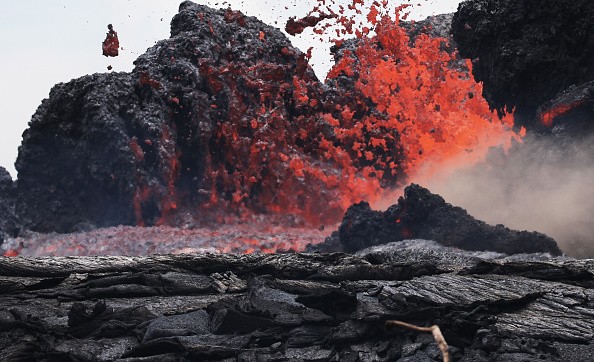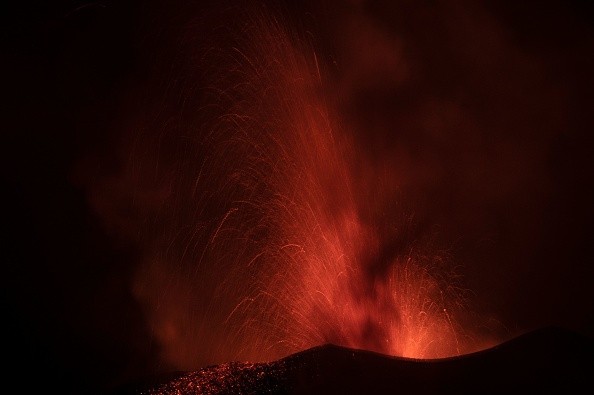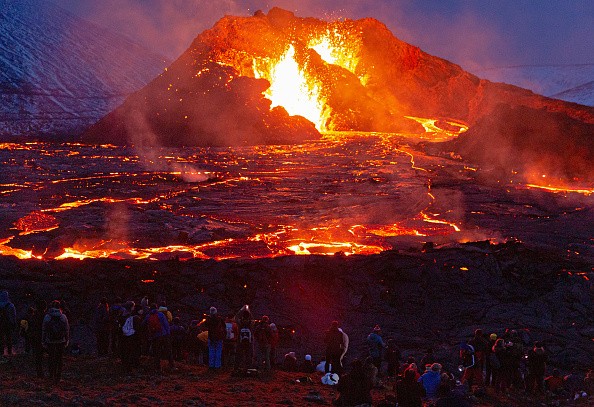Molten material that originates shockingly near the Earth's surface may fuel some of the world's volcanic hot spots.

According to popular belief, these findings imply that such hotspots may not necessarily originate from massive plumes of blazing hot rock rising from the Earth's core.
Volcanoes

Volcanoes are most commonly found on the edges of tectonic plates, where they form as large slabs of rock drift on top of the mantle layer that separates the Earth's core and crust. The volcanoes that make up the so-called Ring of Fire on the Pacific Rim are classic examples of such volcanoes.
On the other hand, Volcanoes occasionally erupt in the center of tectonic plates. Mantle plumes, mushroom-shaped pillars of hot rock rising from the deep mantle to scorch overlying material like a blowtorch, might be the source of these hotspots. Geologists believe that chains of volcanic isles might form when tectonic plates pass through such plumes.
According to a previous study, Volcanic hotspots are 100 to 300 degrees Celsius (180-540 degrees Fahrenheit) hotter than mid-ocean ridges, where magma rises when tectonic plates stretch apart underwater. This is backed by the theory that matter from near Earth's hot core heated hotspots while colder mantle rock heated mid-ocean ridges.
Volcanic Hotspots
Several hotspots are now far colder than previously assumed, raising doubts about their origins. Vedran Lekic, a seismologist at the University of Maryland, College Park, who did not participate in this study, said, "A considerable proportion of hotspots do not match the standard plume paradigm."
Scientists looked at the velocity of seismic waves rippling through the mantle under marine hotspots and ridges to determine temperatures at those locations in a new study. (Clear rock causes seismic vibrations to travel quicker.)
About 45 percent of hotspots are more than 155 degrees Celsius (279 degrees Fahrenheit) hotter than mid-ocean ridges. The other 40%, on the other hand, are just 50 to 136 degrees Celsius (90 to 245 degrees Fahrenheit) warmer than mid-ocean ridges, which is not extremely hot and hence not buoyant enough to allow vigorous upwelling of rock from the deep mantle. Furthermore, only around 15% of hotspots are particularly cold, about 36 degrees Celsius warmer or less than mid-ocean ridges.
Comparing Ratio
The scientists also looked at the ratio of uncommon helium-3 to more common helium-4 in their rock to learn more about the origins of these various types of hotspots. (Helium-3 atomic cores contain one neutron, whereas helium-4 nuclei each have two).
In the crust, helium is mostly helium-4 due to the breakdown of uranium and other radioactive isotopes over time. In contrast, deep within the Earth, helium is richer in helium-3, likely from ancient material reservoirs that preserve the original ratio found between these isotopes during Earth's early days. According to the study, hotspots had a substantially greater ratio of helium-3 to helium-4 than cold hotspots.
While most famous hotspots, such as those underlying Hawaii, Iceland, the Galapagos Islands, Samoa, and Easter Island, may be explained by the classic model of hotspots originating from plumes welling up from the deep mantle, "perhaps the truth is that only a few hotspots truly behave like our classical model of mantle plumes and hotspots," said study co-author Carolina Lithgow-Bertelloni, a geodynamicist
Seismologist Ross Maguire from the University of New Mexico, who did not participate in this study, said, "This confirms what some researchers have previously argued, that the term "hotspot" is misleading, and that volcanoes which do not fit the plate tectonic paradigm should instead be referred to as "melting anomalies."
The upper mantle, slow-moving deep plumes that have more time to cool, or deep plumes that interact with and become cooled by spinning mantle rock may be the source of cooler hotspots. "If this is true, it will be difficult for geodynamicists to explain such a discovery," Bernhard Steinberger, a geodynamicist at Potsdam's German Research Center for Geosciences who was not involved in the research, said in a statement. "Without a doubt, these findings will spur further research."
Overall, Lithgow-Bertelloni stated that "the classical understanding of plumes is not so much wrong as more complicated than provided 30 to 50 years ago."
Instead, Steinberger stated that this research "maps to a lot wider variation among plumes." You get a fresh, close-up perspective of a planet or moon, and it has some unexpected traits, but it is still spherical," says the author.
More Investigation

According to Lithgow-Bertelloni, scientists would like to investigate each hotspot in more depth in the future to have a better understanding of their temperatures. She also stated that they intend to run additional computer simulations to evaluate various cool hotspot conditions.
Read also: Long Valley Supervolcano: World's Most Dangerous Volcano Shows Signs of 'Imminent Eruption'
For similar news, don't forget to follow Nature World News!
© 2025 NatureWorldNews.com All rights reserved. Do not reproduce without permission.





